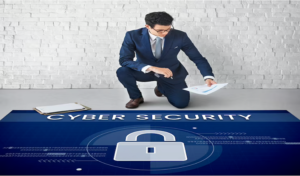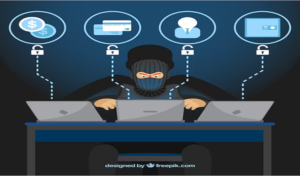The importance of regulation and compliance in cybersecurity

In the modern age we live in now, cybersecurity is an important part of our daily lives. We use the internet for almost everything, from shopping to social media. But as people rely more and more on technology, online threats have grown at an exponential rate. Cybercriminals are getting smarter about how they attack, and the results of an attack can be very bad. Because of this, it’s important to protect ourselves, our businesses, and our country from these risks by putting in place strong cybersecurity measures.
Regulations and compliance are one of the best ways to make sure safety. There are many cybersecurity laws and compliance systems in place in the United States to help organisations protect themselves from cyber threats. These laws and frameworks are meant to provide a standard way to deal with cybersecurity. This makes sure that organisations follow a set of rules and requirements to keep their data private, secure, and accessible. By following these rules, organisations can control their cyber risks and protect themselves from possible cyber threats.
In this blog, we’ll talk about how important rules and regulations are for safety in the United States. We’ll look at the different cybersecurity rules and compliance systems that are in place and talk about why they are so important for keeping our country safe from cyber threats. We’ll also talk about the problems organisations have with putting these rules into place and what might happen in this field in the future. So, fasten your seatbelts and get ready to dive deep into the world of cybersecurity compliance and law!
An Overview of US Cybersecurity Laws and Compliance
The United States has a complete set of rules and standards for cybersecurity. These rules and standards are meant to make sure that private data is safe and secure. Some of the most important rules and guidelines are HIPAA, FISMA, and NIST. For example, HIPAA controls healthcare data and requires healthcare providers to use strong security steps to keep patient information safe. FISMA requires federal agencies to set up an information security programme, and NIST offers a set of cybersecurity rules and best practises.
The goal of these rules and guidelines is to make sure that organisations set up and keep up-to-date strong cybersecurity means to protect themselves from cyber threats. They offer a standardised way to deal with cybersecurity, which helps organisations meet a set of rules and standards to keep their data private, secure, and available. The main goal is to keep private information from being viewed, stolen, or destroyed by people who shouldn’t be able to, and to reduce the chance of a cyber attack.
How important regulation and compliance are for cybersecurity
Regulation and compliance are important for ensuring cybersecurity in the US because they provide a standardised approach to cybersecurity that makes sure organisations meet a set of requirements and standards. This method helps organisations set up and keep up-to-date strong security steps to protect themselves from cyber threats. Compliance with cybersecurity laws also makes sure that organisations know what risks they face and what steps they need to take to handle these risks well.
If you don’t follow the rules or don’t take hacking seriously, bad things could happen. If an organisation doesn’t follow cybersecurity rules, it could face legal and financial penalties as well as damage to its image. Cyber attacks can cause businesses to lose money, lose private data, and stop doing business. Also, if an organisation doesn’t follow the rules, it may have serious legal problems that can be expensive and take a long time to fix. So, it’s important for organisations to put cybersecurity regulations and compliance at the top of their to-do lists so they can handle cyber risks and protect sensitive data.
Risks of Cybersecurity in the U.S.
There are a lot of cyber dangers in the United States, such as malware, phishing, ransomware, and social engineering. Cybercriminals often go after key infrastructure, financial institutions, and government agencies. This puts sensitive data and national security at risk. Also, the growth of the Internet of Things (IoT) has opened up new security holes because connected devices are often left unlocked, giving hackers a way in.
Regulation and compliance standards can help reduce these risks by making cybersecurity more consistent. By following these frameworks, organisations can set up and keep strong cybersecurity measures, such as access controls, encryption, and intrusion detection systems, to protect themselves from cyber threats. Compliance with these rules also makes sure that organisations know exactly what risks they face and what steps they need to take to deal with them well. By putting regulation and compliance in cybersecurity at the top of their to-do lists, organisations can reduce the risks they face and protect private data and national security.
Examples of US Cybersecurity Compliance and Regulation
In the United States, HIPAA, FISMA, and NIST are just a few examples of regulations and compliance standards for cybersecurity. HIPAA makes rules about how to protect sensitive health information, and FISMA requires government agencies to set up a programme to protect information. NIST gives organisations a complete set of rules and best practises for cybersecurity that they can use to protect their systems and data.
These models have helped improve cybersecurity in the US by giving a standard way to think about cybersecurity. They have given organisations clear rules and standards to follow, which helps lower the risk of cyber threats. Compliance with these standards also helps organisations find and deal with possible risks, which can improve their security even more. By putting cybersecurity regulations and compliance at the top of their list of priorities, organisations in the United States can protect their private data and protect themselves from cyber threats, making the country as a whole safer.
Problems with enforcing cybersecurity laws and regulations
When it comes to enforcing hacking rules and regulations in the United States, both organisations and the government face a number of problems. One of the biggest problems is that cyber threats are always changing, which makes it hard to keep up with all the new attack routes and holes. Another problem is that compliance systems are often very complicated and hard for people who aren’t technical to understand. Some organisations may also find it hard to find the money and trained workers they need to put in place effective cybersecurity measures.
To deal with these problems, organisations and the government can put cybersecurity training and education at the top of their to-do lists. This will make more people aware of cyber dangers and the best ways to comply. Organisations can also think about hiring experienced third-party providers who specialise in putting in place and handling compliance frameworks to handle their cybersecurity needs. Collaboration between the government and the business sector can also help make cybersecurity regulations and compliance easier to understand. Lastly, giving tax breaks or other incentives for compliance can urge organisations to put cybersecurity regulations and compliance at the top of their to-do lists.
Conclusion
In conclusion, law and compliance are very important for US cybersecurity. Cyber threats keep getting worse, and the risks that cybercriminals offer can be very bad. To protect private data and national security, it is important to put cybersecurity regulations and compliance frameworks at the top of the list. Compliance systems like HIPAA, FISMA, and NIST offer standard ways to think about cybersecurity that organisations can use to set up strong security measures.
If you don’t follow the rules or have bad cybersecurity practises, you could lose money, hurt your image, or even get in trouble with the law. To reduce these risks, organisations must make security a top priority and give themselves enough money to put in place effective security measures. Collaboration between the government and the business sector can also help make cybersecurity regulations and compliance easier to understand.
In short, if the US puts cybersecurity regulations and compliance at the top of its list of priorities, organisations can protect private data, guard against cyber threats, and improve the country’s overall security.
Read More You May Like:








